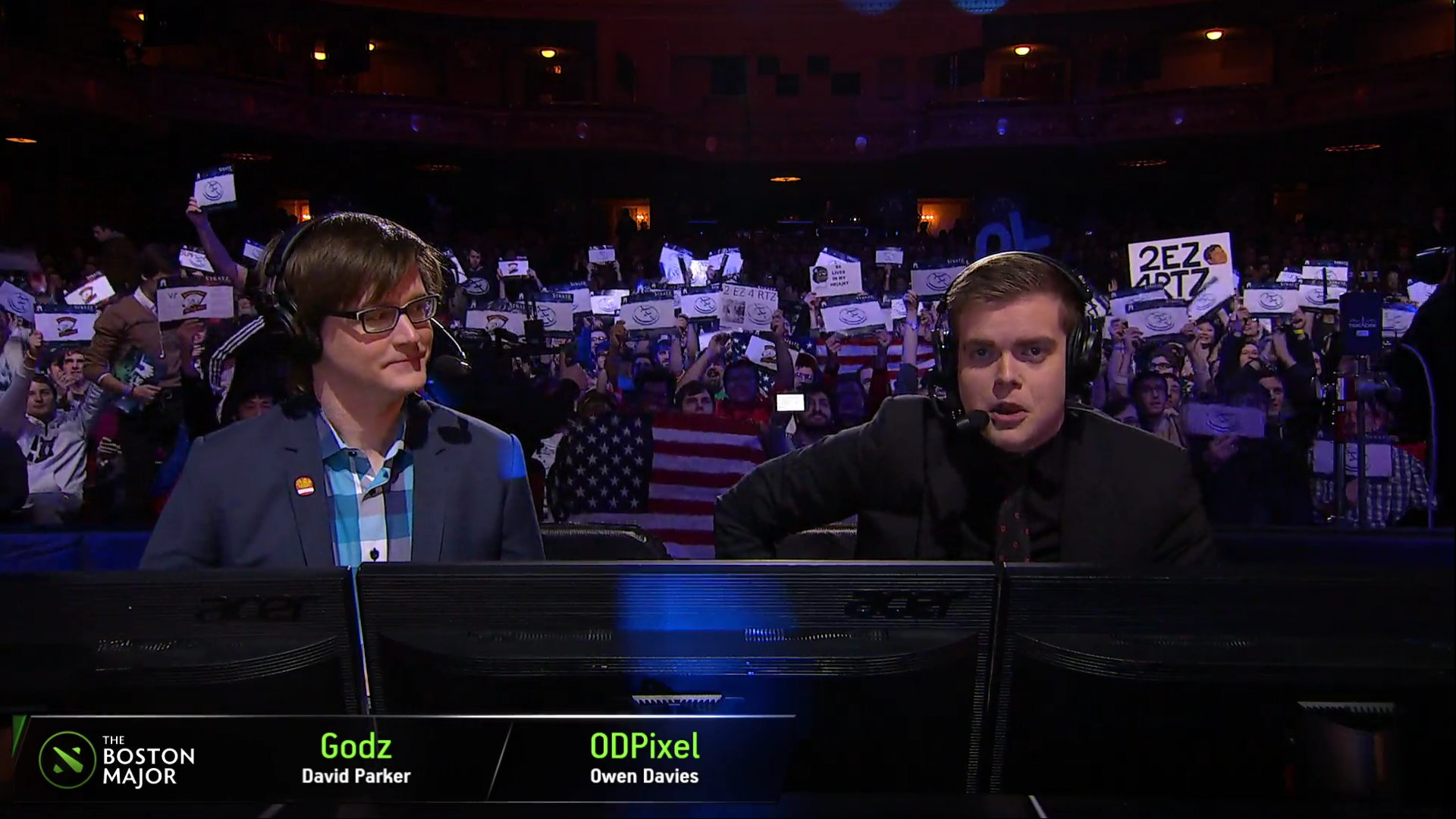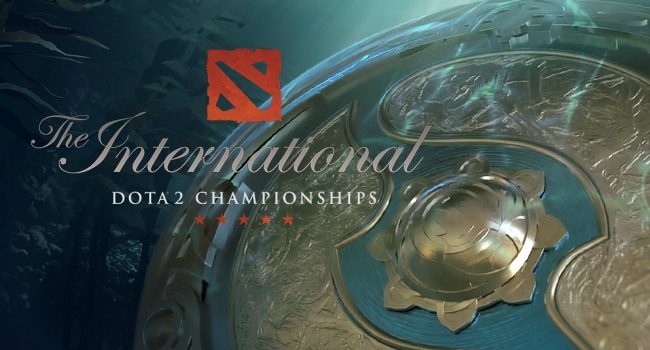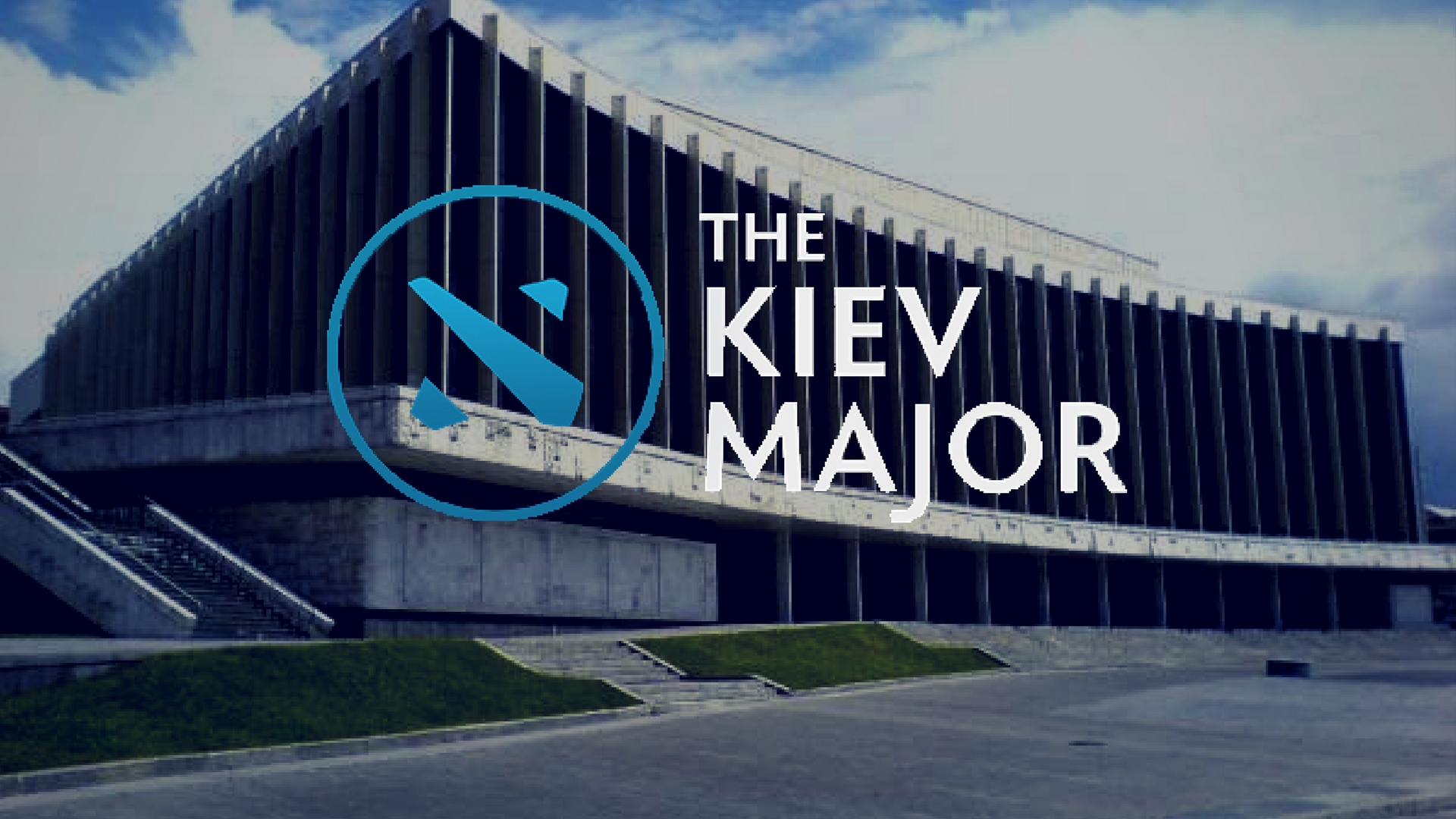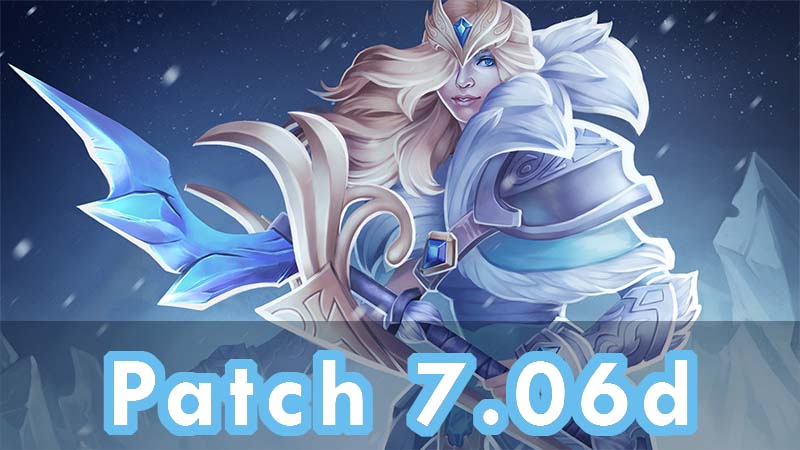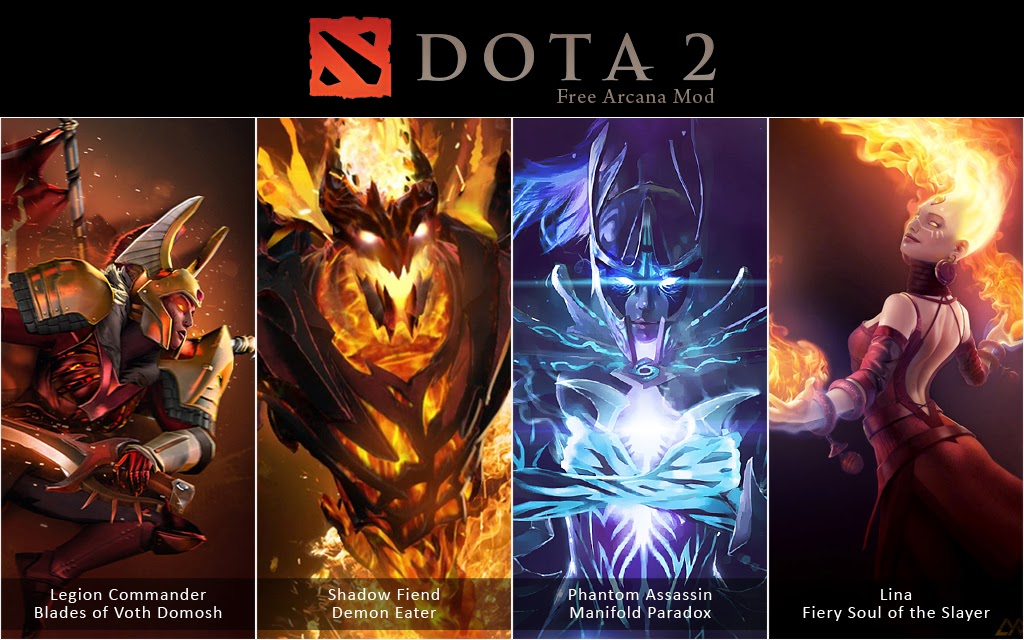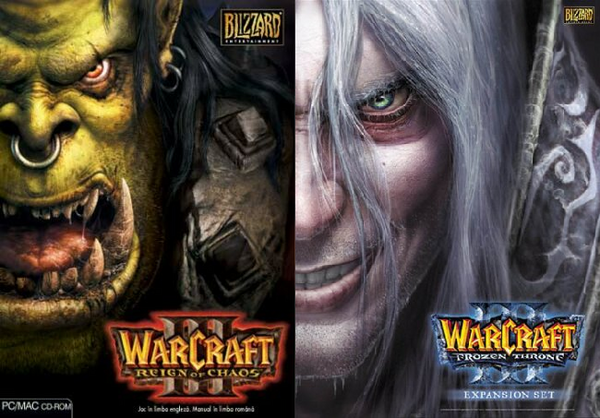

Dota 2 is a video game developed and published by Valve Corporation. The game is the stand alone sequel to Defense of the Ancients(Dota), which was a community-created mod for Blizzard Entertainment's Warcraft IIIL Reign of Chaos and its expansion pack, The Frozen Throne. Development of Dota 2 began in 2009 when IceFrog, the lead designer of the original Defense of the Ancient mod, was hired by Valve to create a modern sequel. Dota 2 was officially released on Steam in July 2013 for personal computers, following a Windows-only open beta phase that began two years prior. Since it release, Dota 2 has been the most played game on Steam, with peaks of over a million concurrent players. The game also allows for the community to create custom game modes, maps, and cosmetics for the heroes, which are uploaded to the Steam Workshop.
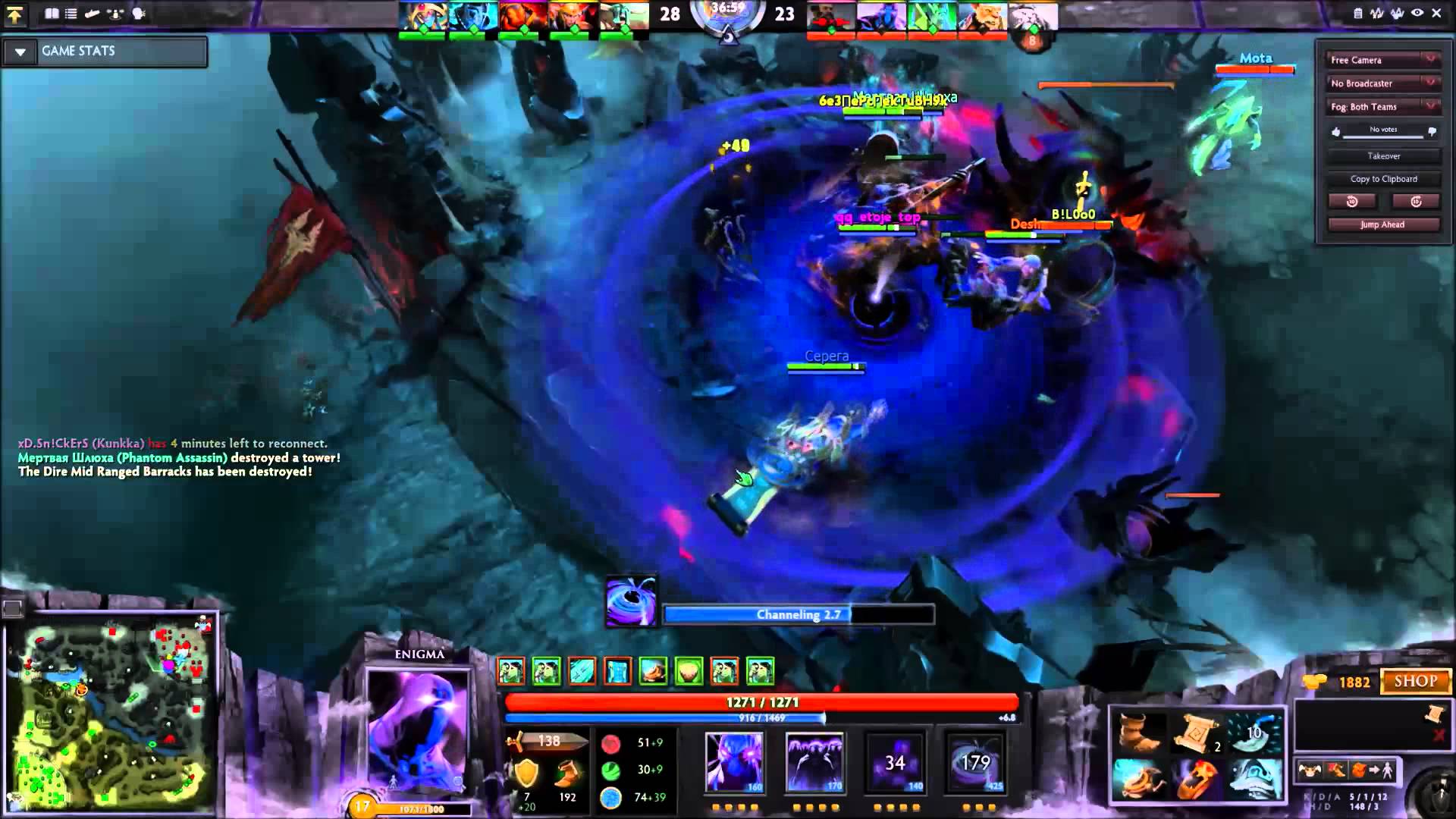
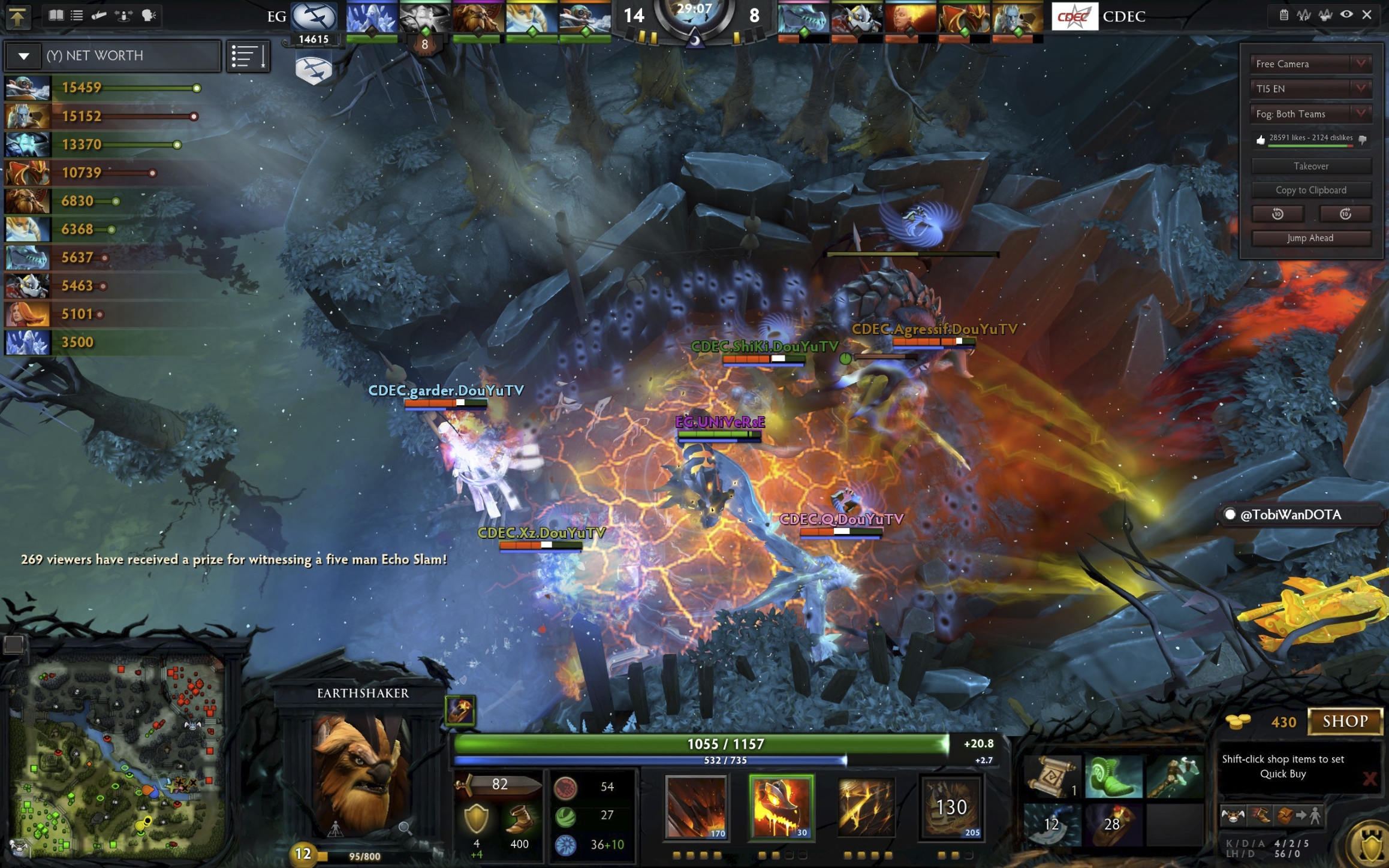
Dota 2 is a multiplayer online battle arena(MOBA) video game in which two teams of five players compete to collectively destroy a large structure defended by the opposing team known as the "Ancient", whilst also defending thier own. As in Dota, the game is controlled using standard real-time strategy controls, and is presented on a single map in a three-dimensional isometric perspective. Ten players each control one of the game's playable characters, known as "heroes", with each having thier own design, benefits and weaknesses. Heroes are divided into two primary roles, known as the "Carry" and "Support". Carries, which are also called "cores", begin each match as weak and vulnerable, but are able to become more powerful later in the game, thus becoming able to "carry" thier team to victory. While supports generally lack abilities that deal heavy damage, instead having ones with more functionality and utility that provide assistance for their carries.
Players select their hero by way of a pre-game drafting phase, where they are able select their hero and discuss potential strategies and lineups with their teammates. Multiple game types in the game exist, which mainly alter the way hero selection is handled such as "All Pick", which offer no restrictions on hero selection, "All Random", which randomly assigns a hero for each player, and "Captain's Mode", where a single player on each team selects heroes for their entire team, which is primarily used for professional play.
All heroes have a basic damage-dealing attack, in addition to powerful abilities. Each hero has at least four abilities, all of which are unique, which are the primary method of fighting. Heroes begin each game with an experience level of one, only having access to one of their abilities, but are able to level up and become more powerful during the course of the game, up to a maximum level of 25. Whenever a hero gains an experience level, the player is able to unlock another of their abilities or improve one already learned. The most powerful ability for each hero is known as their "ultimate", which requires them to have an experience level of six in order to use. In order to prevent abilities from being used without consequence, a magic system in the game exists. Activating an ability costs a hero some of their "mana points", which slowly regenerates over time. Using an ability will also cause it to enter a cooldown phase, in which the ability can not be used again until a timer counts down to zero. All heroes have three attributes: strength, intelligence, and agility, which affect health points, mana points, and attack speed, respectively. Each hero has one primary attribute out of the three, which adds to their non-ability basic damage if increased. Heroes also have an ability augmentation system known as "Talent Trees", which allow players further choices on how to develop their hero. If a hero runs out of health points and dies, a timer begins to count down until they respawn in their base.
The two teams—known as the Radiant and Dire—occupy fortified bases in opposite corners of the map, which is divided in half by a crossable river and connected by three paths, where are referred to as "lanes". The lanes are guarded by defensive towers that attack any opposing unit who gets within its line of sight. A small group of weak computer-controlled creatures called "creeps" travel predefined paths along the lanes and attempt to attack any opposing heroes, creeps, and buildings in their way. Creeps periodically spawn throughout the game in groups from two buildings, called the "barracks", that exist in each lane and are located within the team's bases.
The map is also permanently covered for both teams in fog of war, which prevents a team from seeing the opposing team's heroes and creeps if they are not directly in sight of themselves or an allied unit. The map also features a day-night cycle, with some hero abilities and other game mechanics being altered depending on the time of the cycle. Items known as "wards" are able to be placed in most locations on the map, granting line of sight vision in a small area around it for the team who had planted it. Wards last for six minutes after being placed, and will disappear once time runs out or if discovered and destroyed by the opposing team.
Also present on the map are "neutral creeps" that are hostile to both teams, and reside in marked locations on the map known as "camps". Camps are located in the area between the lanes known as the "jungle", which both sides of the map have. Neutral creeps do not attack unless provoked, and will respawn over time if killed. The most powerful neutral creep is named "Roshan", who is a unique boss that may be killed by either team to obtain an item that allows a one-time resurrection by the hero that holds it. Roshan will respawn around ten minutes after being killed, and becomes progressively harder to kill as the match continues over time.

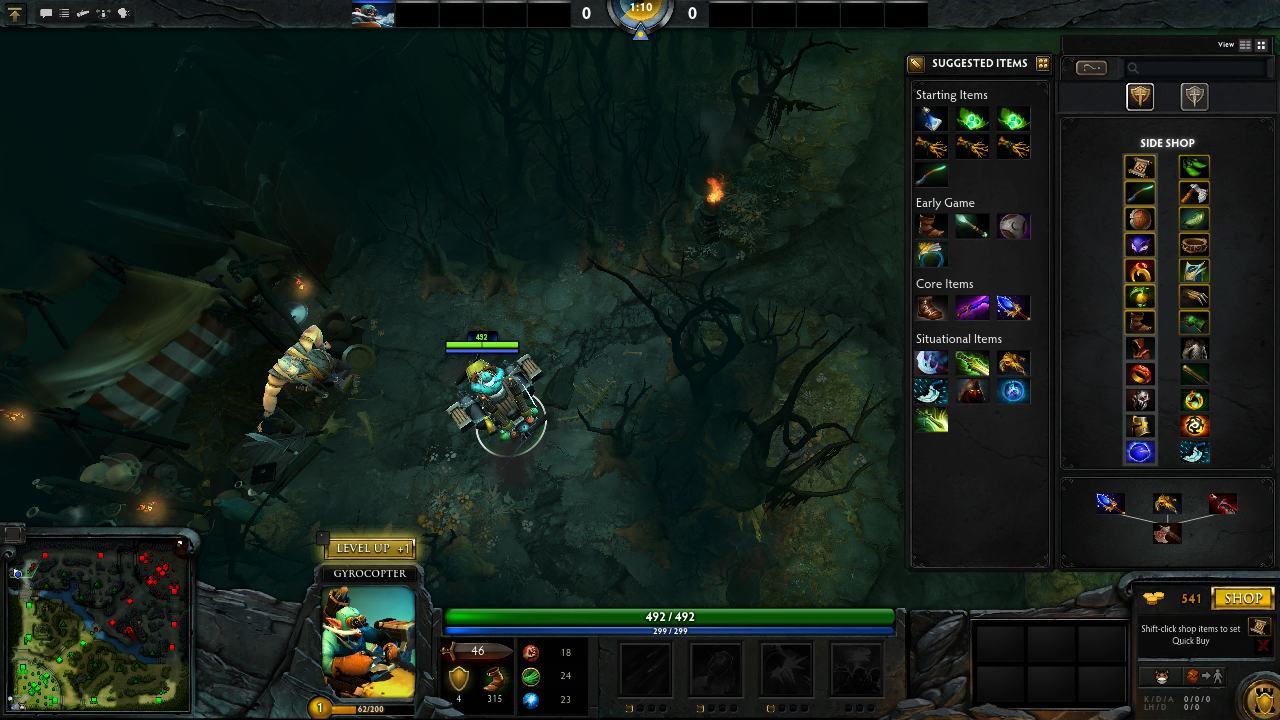
In addition to having abilities becoming stronger during the game, players are able to buy items that provide their own special abilities. Items are not limited to specific heroes, and can be bought by anyone. In order to obtain an item, players must be able to afford it with gold, which is primarily obtained by killing enemy heroes, destroying enemy structures, and killing creeps, with the latter being an act called "farming". Only the hero that lands the killing blow on a creep obtains gold from it, an act called "last hitting", but all allies receive a share of gold when an enemy hero dies close to them. Players are also able to "deny" allied units and structures by last hitting them, which then prevents their opponents from getting full experience from them. Gold can not be shared between teammates, with each player having their own independent stash. The player also receives a small, continuous stream of gold over the course of a match.
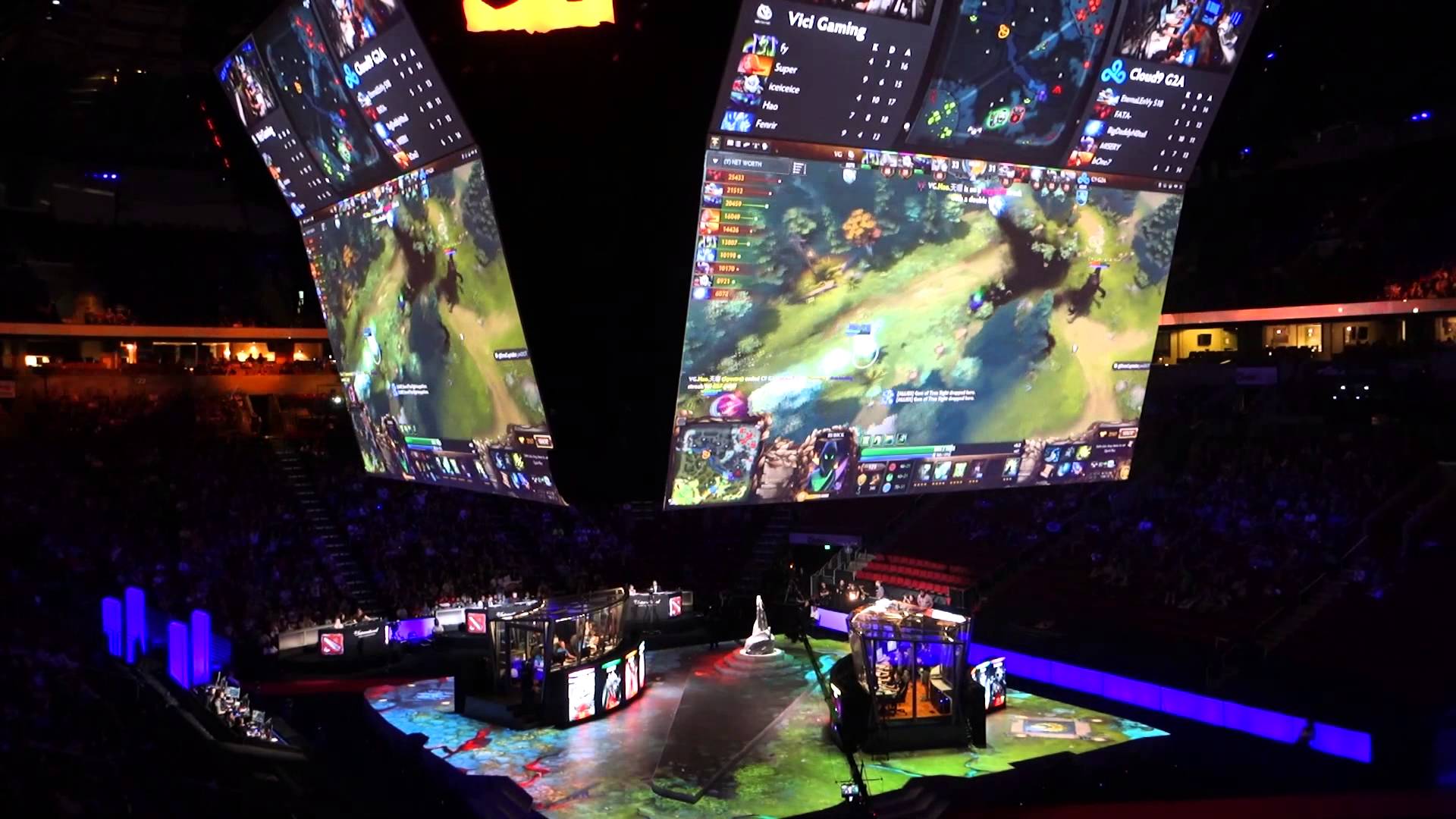
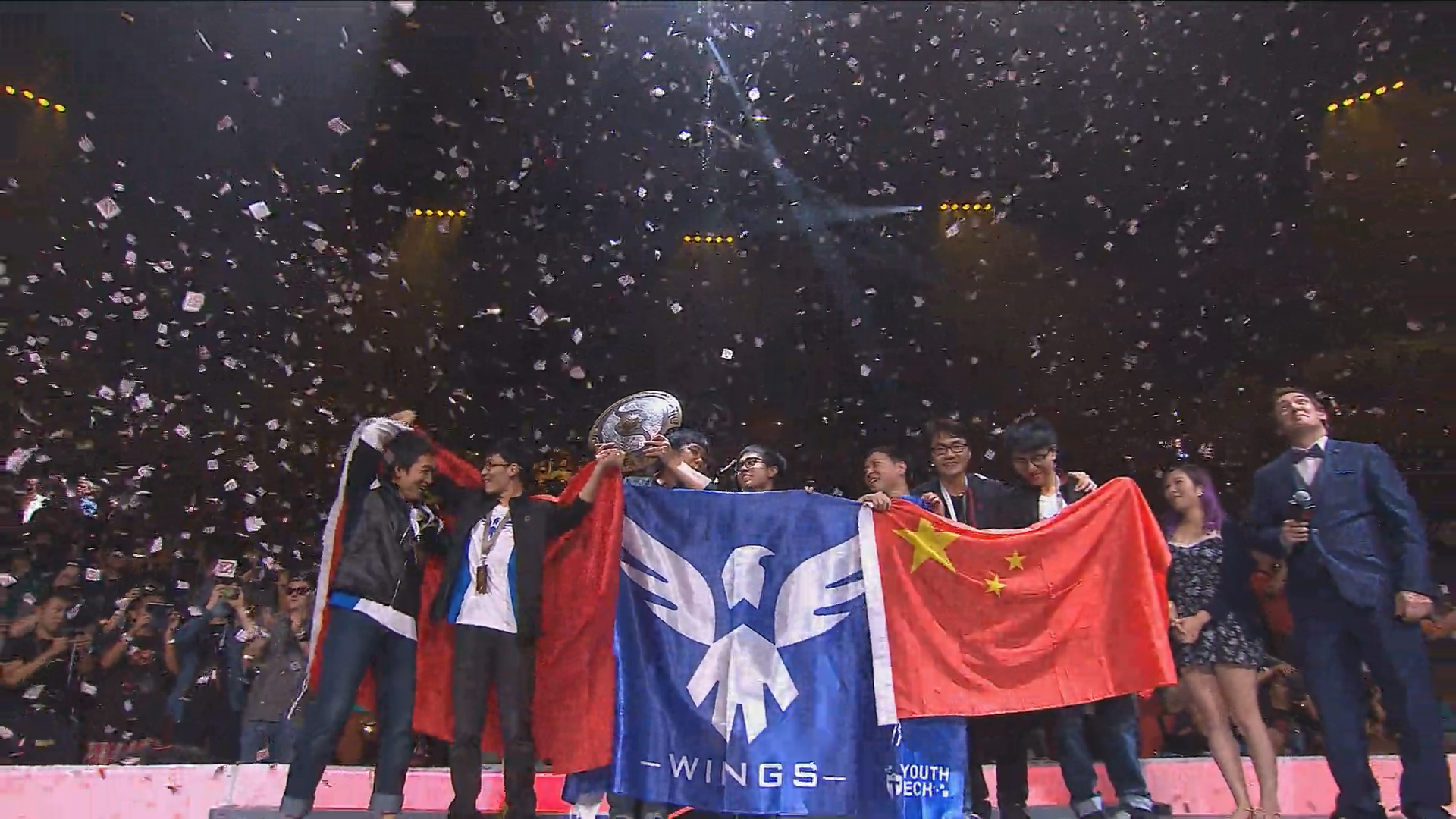
To ensure that enough Defense of the Ancients players would take up Dota 2 and to showcase the game's capabilities, Valve sponsored sixteen accomplished Defense of the Ancients teams to compete at The International, a Dota 2 specific eSports tournament, for a $1 million prize in 2011. The International became an annual championship tournament in 2012, with the venue changing to Seattle. In its third year, The International allowed crowdfunding to add to its prize pool through an interactive, in-game item called a "compendium". Compendiums, which are optional and must be purchased separately, allow players who buy them to directly raise prize money for The International by spending money on unique compendium cosmetics and other in-game items, with 25% of all the revenue made going directly to the prize pool. Sales from the 2013 compendium helped raise over $2.8 million, making The International 2013 reclaim its previous title as having the largest prize pool in eSports history from the League of Legends Season 2 World Championship.Since then, each annual tournament of The International has broken the previous one's prize pool record, with the fourth iteration of the tournament raising over $10.9 million, exceeding the prizes pools of the Super Bowl, Masters Tournament, and Tour de France. At The International 2015, the prize pool exceeded $18.4 million, earning the champion team, Evil Geniuses, over $6 million.
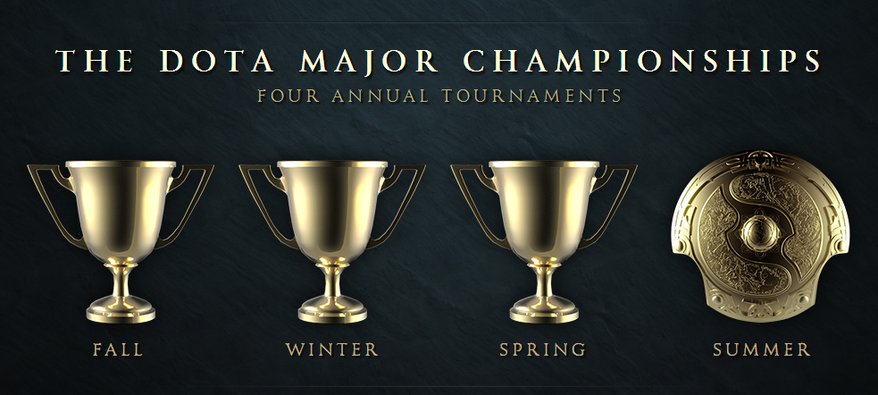
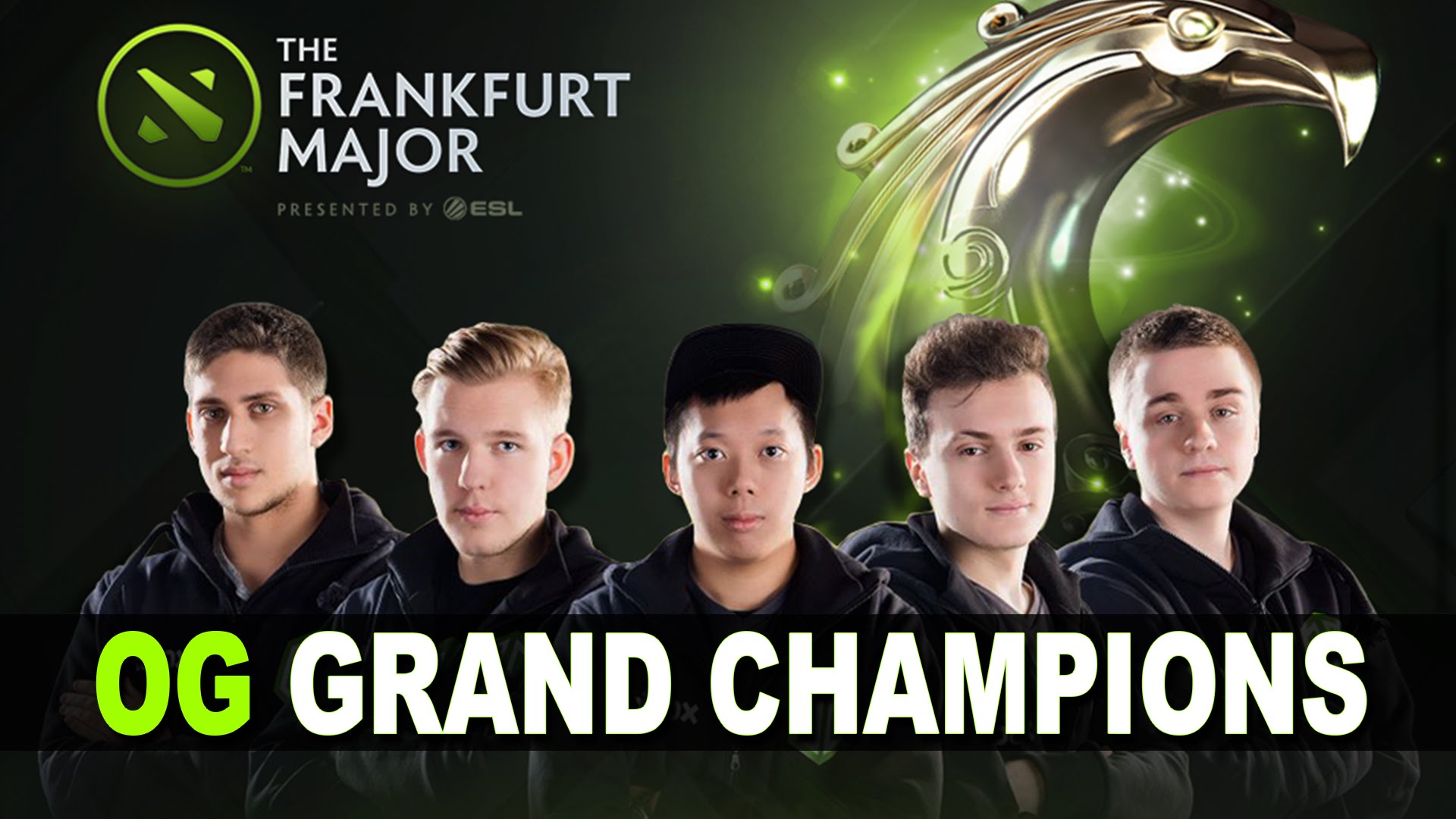
Starting in 2015, Valve began sponsoring smaller, but seasonally held tournaments with a fixed $3 million prize pool, known officially as the Dota Major Championships. The format for the tournaments are based on the series of the same name that Valve also sponsors for their first-person shooter game, Counter-Strike: Global Offensive. The first of which, hosted and produced by ESL, was the Frankfurt Major held in November 2015 at the Festhalle Frankfurt in Frankfurt, and was won by OG. The next Major was hosted and produced by Perfect World, and was held in March 2016 at the Mercedes-Benz Arena in Shanghai, and was won by Team Secret. The third and final Major of the 2015–2016 season was hosted and produced by PGL, and was held at the Mall of Asia Arena in Manila in June 2016.The tournament was won by OG, becoming the first team to repeat as champions of a Dota 2 Major.
Following the introduction of the Majors, The International championships were then considered to be the cumulative "Summer Major", with the 2016 iteration being the first one under the new format. Still using the same crowdfunding system for the prize pool as previous Internationals, the tournament broke the record for the highest prize pool in eSports history at over $20 million, surpassing the record that the event had set the previous year, and was won by Wings Gaming. At a player's meeting at the same event, Valve announced that due to scheduling issues they had prior to the International, they would be reducing the number of Majors from three to two for the following season, with the next tournament taking place in Boston at the Wang Theatre in December 2016, which was won again by OG. The second and final Major of the season was held in Kiev at the National Palace of Arts in April 2017, which was won again by OG, their fourth Major championship victory.
